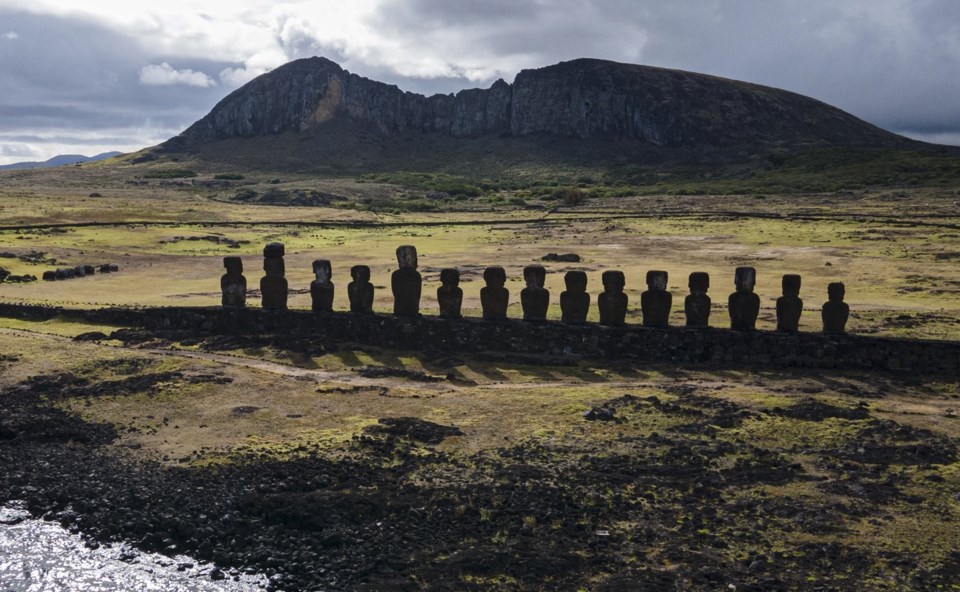COPENHAGEN, Denmark (AP) — Artifacts and human remains taken by a Norwegian explorer and anthropologist in the late 1940s are being returned by a museum in Oslo to , the Kon-Tiki Museum said Wednesday.
In 1947, explorer Thor Heyerdahl sailed on a log raft named Kon-Tiki from Peru to Polynesia in 101 days to prove his theory — that the .
He brought 5,600 objects back from Easter Island, also known as Rapa Nui. This is the third time objects taken by him are being returned.
Many have been stored and displayed at the Kon-Tiki Museum in Oslo, Norway's capital, and some were given back in 1986 and others 2006. The return has been a collaboration between the museum, Chile and Rapa Nui's local authorities.
"My grandfather would have been proud of what we are about to achieve,” said Liv Heyerdahl, head of the museum and the explorer's granddaughter.
She told the Norwegian news agency NTB that the objects were brought to Norway "with a promise that they would one day be returned.”
Among those that are being returned this time around are human remains called Ivi Tepuna and sculpted stones.
A nine-person delegation had traveled to Norway this week to collect the items. Four of them spent the night at the Oslo museum, alongside the remains as part of a ritual ceremony to take back the spirits of the remains.
“First one must awaken the spirits, and then speak to them in our original language. Food is then prepared to eat a meal with them, where the smell of the food goes to the spirits,” a member of the delegation, Laura Tarita Rapu Alarcón, told NTB.
“It is important that those who own the culture are involved in the process," Liv Heyerdahl was quoted as saying by NTB. "Of course these remains should be returned, and it feels right because they belong to the Rapa Nui.”
In 2019, an agreement was signed in Santiago, Chile, during a visit by . However, the COVID-19 pandemic stopped all activities in 2020, the museum said.
A book about Thor Heyerdahl's voyage — he died in 2002 at the age of 87 — has become an international bestseller, and his film of the journey won an Academy Award for best documentary in 1951.
for the hundreds of moai — monolithic human figures carved centuries ago by this remote Pacific island’s Rapanui people.
Covering about 164 square kilometers (63 square miles) and home to about 7,700 people, half of them with Rapa Nui ancestry, Easter Island was formed at least 750,000 years ago by volcanic eruptions and is one of the world’s most isolated inhabited islands.
Located 3,700 kilometers (2,300 miles) from South America, Rapa Nui was declared a UNESCO World Heritage Site in 1995. In 2019, it was officially renamed “Rapa Nui-Easter Island” from its previous name of just Easter Island.
Jan M. Olsen, The Associated Press




